Pothos vs Philodendron: Simple Ways to Tell the Difference
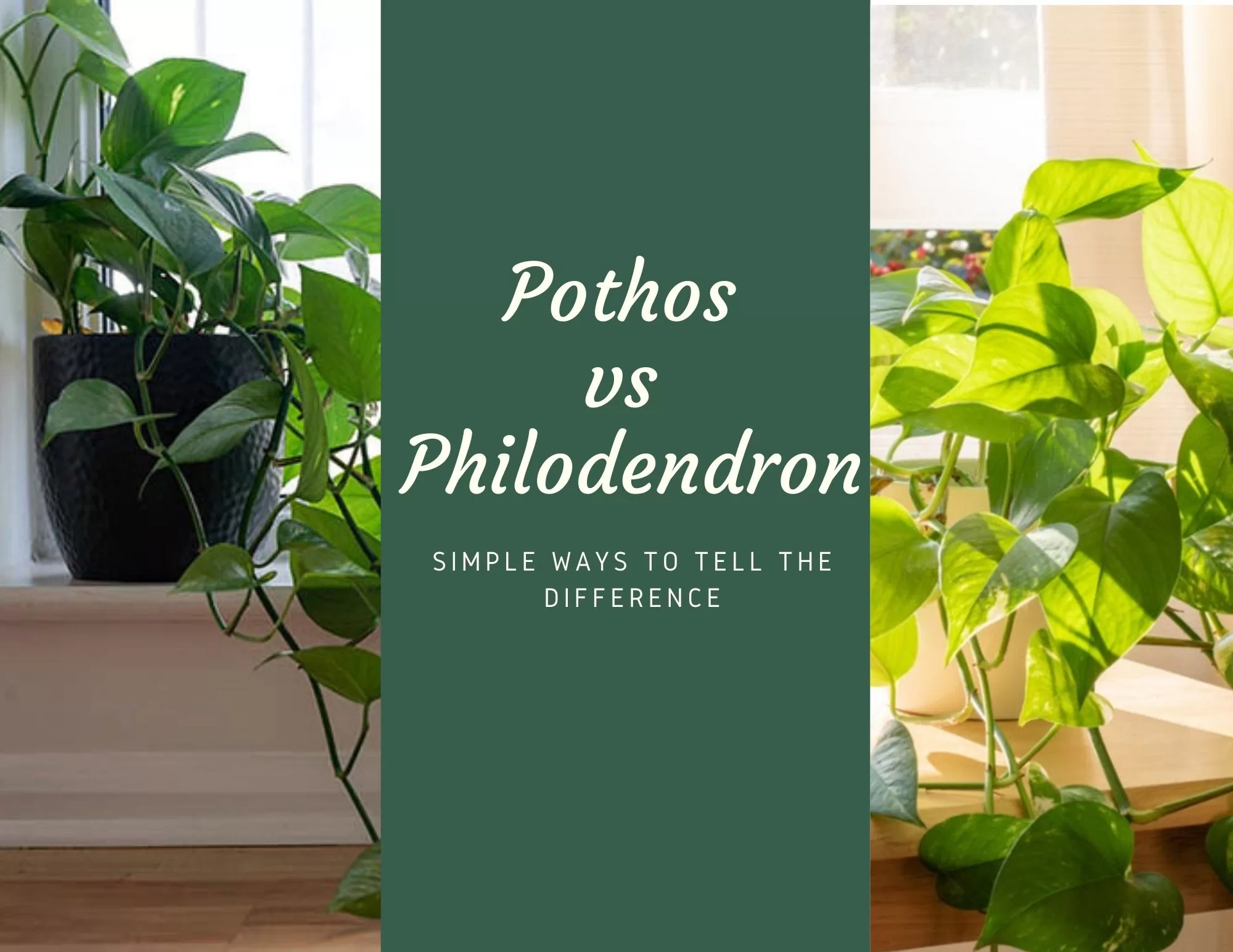
If we are talking about some famous ornamental plants these days, photos and philodendrons would stand out. They would provide the aesthetics necessary to beautify a room or garden. These two plants belong to the same family of the aroid plant Araceae.
But how will you know the difference between pothos and philodendron? Is it just because Pothos belongs to the Epipremnum genus, while philodendron belongs to the Philodendron genus? Let us check the plant’s distinguishing factor as you read further.
How to Tell the Difference Between Pothos and Philodendron
Aside from being part of a different genus, the main distinguishing point of pothos plants and philodendron plants would be the leaf shape, leaf stem, leaf texture, formation of new leaves, petioles, and aerial roots.
Pothos has a botanical name of Epipremnum aureum and is also known as golden pothos or devil’s ivy. The philodendron is known as Philodendron Selloum in the botanical world, and can be called as the tree of love.
These two plants have many things in common, especially with their physical appearance. So how can you tell which one is which? Let us find out through these factors.

Pothos Vs. Philodendron Leaves
In comparison, the pothos leaves are thicker, heart-shaped with accents of golden, white or yellow variegation. A pothos leaf shape may also be slightly raised and you will see a well-defined ridge down the center midrib. Whereas the philodendron leaves are lobe-shaped and the leaf shape can be pinnate or not.
When it comes to texture, pothos leaves are rough or bumpy and they are also waxy leaves. On the other hand, philodendron leaves are usually glossy with a smoother texture. But some varieties of the pothos may have a smooth leaf.
Cataphylls or the small, reduced leaf has their difference between the two plants. A pothos leaf doesn’t have any cataphylls at all. The pothos plants have leaves that grow and extend on their own to initiate the photosynthesis.
A philodendron leaf has cataphyll where a new leaf would sprout. The structures that look like leaves are the ones responsible for photosynthesis. After photosynthesis, the cataphylls on a philodendron leaf would turn brown, go dry and fall off.
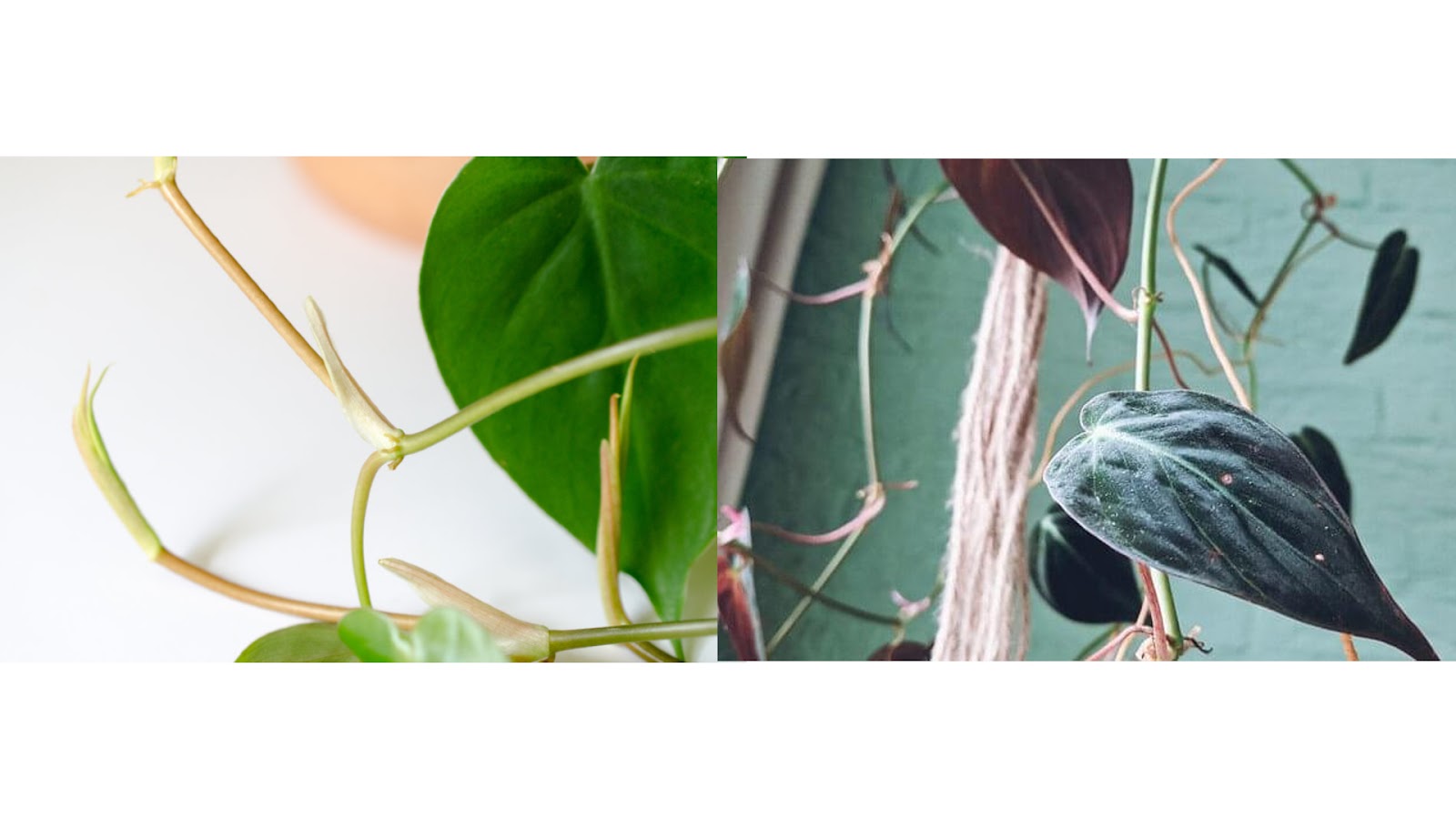
Pothos Vs. Philodendron Aerial Roots
Since the pothos plants and philodendron plants are climbing or vining plants, you will see some aerial roots on them. However, there is a way to tell the difference between pothos and philodendron aerial roots.
Both plants would usually use the aerial roots to climb. They will attach them to the surrounding trees or supporting poles to reach the top. These aerial roots would usually grow out from the nodes or the point of attachment of a leaf or a twig on the stem.
This is where you can tell easily which one is pothos and which one is philodendron. Pothos plants would usually climb using a singular aerial root per node, but it is large. The philodendron plant would usually use multiple aerial roots per node to climb.
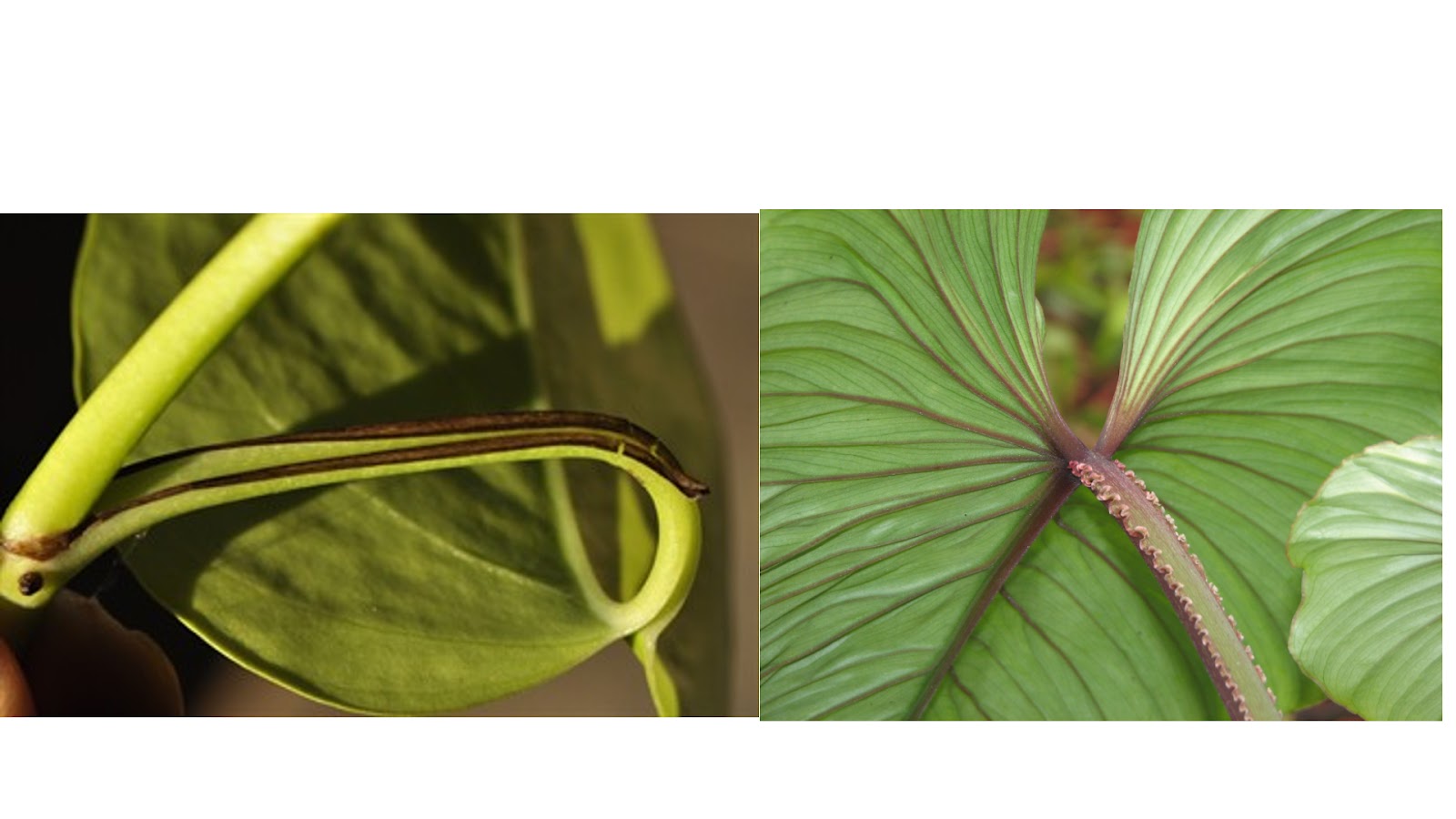
Pothos Vs. Philodendron Petioles
Petioles are actually the stalk that joins a leaf to a stem, or in common botanical term, a leafstalk. This is the part of the plant that is responsible for twisting the leaf to face the sun.
When it comes to petioles of pothos plants, you will notice the chiseled and textured petioles. It runs between the leaf and the pothos plant’s stem. The grooves on the pothos petiole might be invisible once dark colorations appear on the inside of the petioles.
On the other hand, the philodendron petiole is commonly round and smooth. You will also notice slender philodendron petioles compared to those found in pothos petioles.

Pothos Vs. Philodendron Stipules
After the petioles, you can also tell the difference between pothos and philodendron through stipules. A stipule is described as a small leaf-like appendage to a leaf. It is usually borne on both sides of the base of a leafstalk.
The pothos stipules are usually restricted, which means they are fused to the stem and petiole. Whereas the stipules on philodendron are free and can grow on their own without being restricted to a certain area.
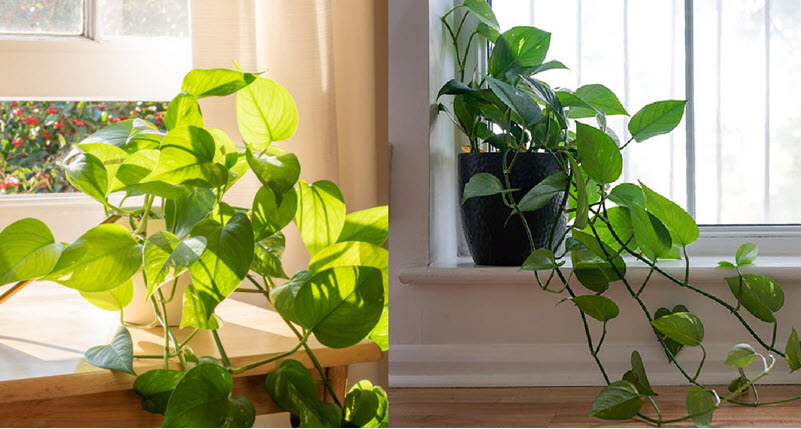
Pothos Vs. Philodendron Lighting Conditions
Lighting conditions are practically essential for ornamental plants, such as the pothos and philodendrons, to thrive or grow well. This is why it is important to determine what is a pothos plant and what is a philodendron plant.
Pothos usually prefer lights that are bright and indirect. This allows the plants to grow and develop to their full potential. This is also important for achieving the right characteristic leaf pattern.
Philodendrons usually need low light or areas where light isn’t too bright to achieve the right characteristic leaf pattern, especially for those species that are variegated cultivars.
Though both of these plants can’t tolerate direct sunlight, pothos can withstand higher light intensity without getting some torched leaves, compared to the philodendrons.
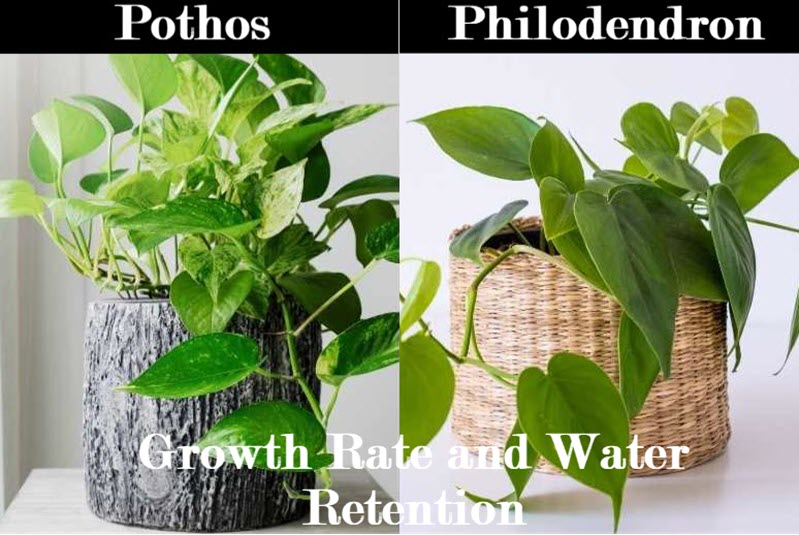
Pothos Vs. Philodendron Growth Rate and Water Retention
If a water retention award is created for these two plants, it would be given to pothos as they are able to hold water longer than philodendrons. Well, the reason why pothos are able to do it would be due to the thicker leaves that they possess.
The thick green leaves of pothos allow them to store more water and make them more drought-tolerant as well, when compared to the philodendrons.
Since Pothos can hold water longer than the philodendron, it is safe to say that it is the reason why they also have a faster growth rate than the philodendron.
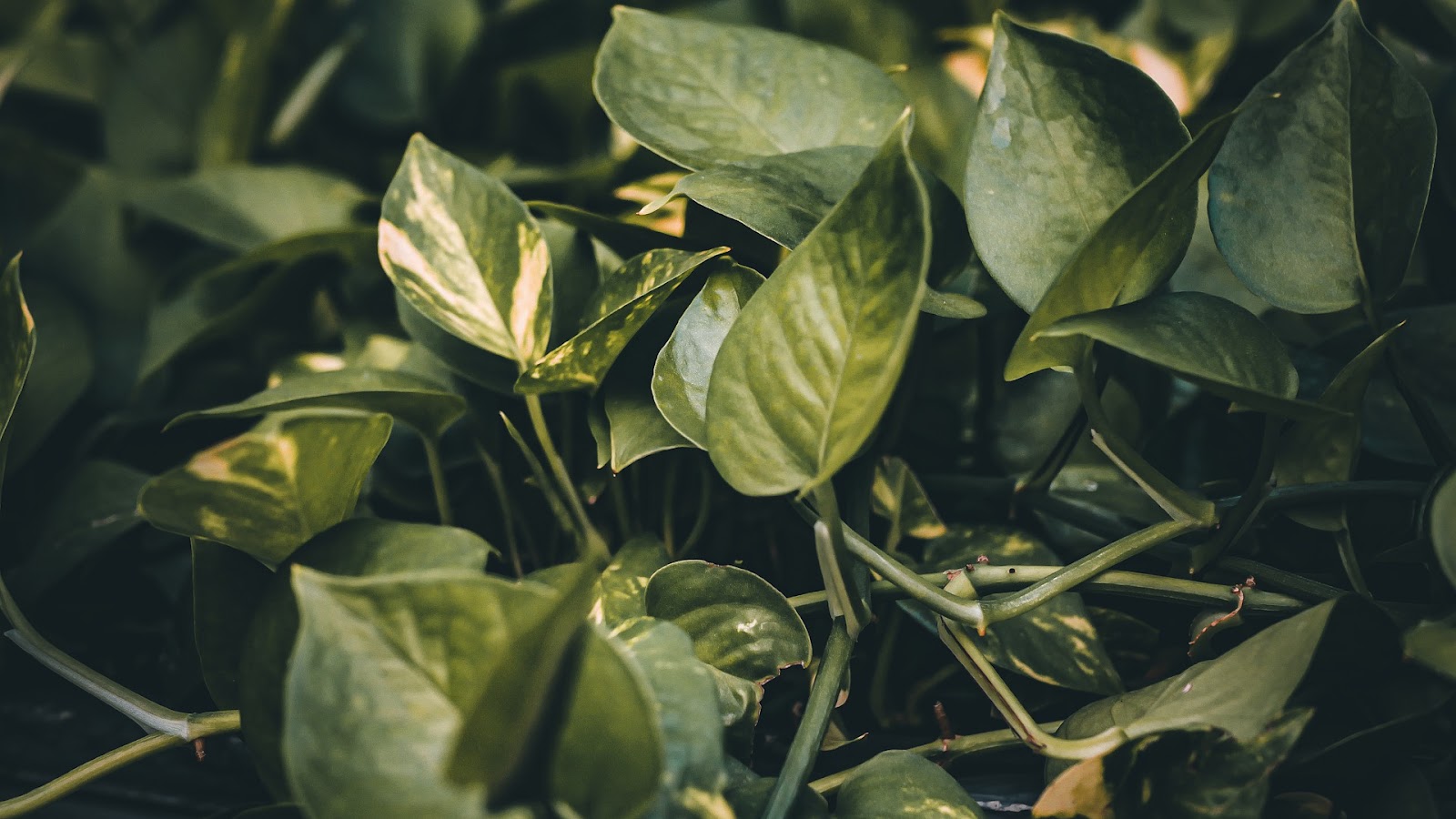
How to Identify Pothos
Now that you know the difference between two plants, it is important to know how you can identify which plant belongs to Pothos.
As you know, the leaf difference between pothos and the philodendrons lies from their shapes, texture, cataphylls, petioles and stipules. To provide you with a wider knowledge about the leaves of pothos, check out these details.
The leaves of this devil’s ivy would measure 3-4 inches in length. This vining plant would also possess some heart-shaped leaves with a chordate base. They can also be variegated with a green and gold variegation.
Pothos leaves are also irregularly shaped and have shorter ends. The aerial roots are limited and grow as small, thick nubs. What is amazing is that pothos can produce flowers of different colors, such as yellow, green, or even purple flowers.
There are different varieties of the epipremnum genus or pothos varieties that you can have in your garden or living spaces at home. If you are looking for a good ground cover, try the golden pothos. Since the pothos have limited aerial roots, they are best to stay on the ground.
But the golden pothos plants can grow up to 8 inches tall, and it can climb like a vine if given the right pole for support. When grown as a climbing plant, pothos can grow up to 40 feet tall.
You can also check out the jade pothos. This variety of pothos has great vines that are known to cascade elegantly, especially when placed in a hanging basket. It also has those dark green leaves.
You can also consider the Brasil pothos that have those yellow markings in the middle of the green leaf.

How to Identify Philodendrons
Belonging to the Philodendron Selloum genus, philodendrons are one of the most popular houseplants. They are popular due to their different variations from different species.
The glossy leaves with a heart shape, smooth petioles, unrestricted stipules where new foliage forms, are just some of the features to identify the philodendrons easily.
Aside from that, they also sport rounded and heart-shaped leaves with a long spout-like tip. The aerial roots of the philodendrons are also extensive, and the best part? They produce green flowers all year round.
If you are looking for a popular variety of philodendron, try the Heartleaf philodendron. The leaves of the Heartleaf philodendron or heart leaf philodendron can grow up to 12 inches long. The Heartleaf philodendron also produces those white or yellowish-white flowers.
Neon philodendron is also a good option. They have leaves that are brightly yellowish in color. That means they are better for decorations in small rooms or a place of your choice where you want some aesthetics.





